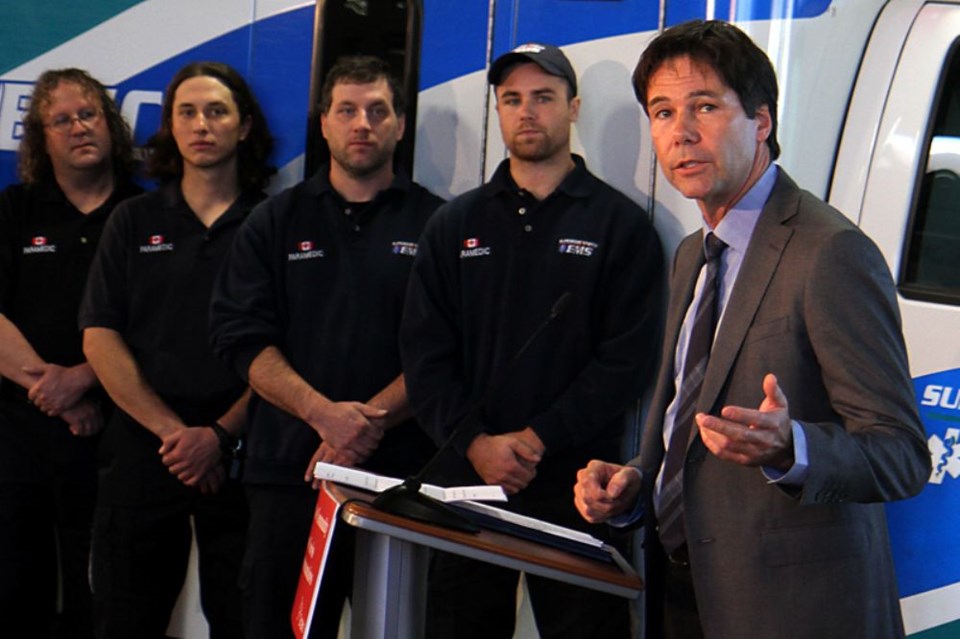THUNDER BAY – Norm Gale knows his paramedics are being overloaded with calls that are not true matters of life and death.
A new provincial program hopes to help the Superior North EMS chief and his paramedics deal with that trend. Community Paramedicine, an Ontario-wide program that combines paramedics with other health-care agencies and professionals to identify high-needs patients and provide them with specialized care that keeps them out of the emergency system.
Those patients will receive, primarily from paramedics, services such as home visits, education about managing chronic illnesses as well as referrals and assessments to community care access centres for further treatment.
Ontario Minister of Health and Long-Term Care Eric Hoskins on Tuesday announced at the Superior North EMS headquarters that $6 million would go to 30 such programs across the province, including one that would serve Thunder Bay and its surrounding communities.
If successful, the Community Paramedicine program would provide care to seniors and chronic illness patients before they need to dial 911.
“The reality is the vast majority of 911 calls are not genuine emergencies,” Gale told media after the announcement. “They are not time sensitive in seconds and minutes. A lot of 911 calls are people who have chronic illnesses seeking access to health care.”
The city and district will receive $200,000 to implement the program within the next year. It will extend beyond Thunder Bay to include communities such as Armstrong, Longlac and Geraldton, which are in Superior North’s service area.
“What we hope it will look like downstream is we leverage paramedics in Thunder Bay who are injured who can’t do the normal job and paramedics in the district who have a low utilization rate,” Gale said.
“We can get that out into the community to help deliver health care to the patients who need it. Maybe we can reduce our 911 call demand which is increasing extraordinarily in the last few years.”
Developing this new approach will also allow paramedics to better align themselves with community organizations such as the Shelter House and the Thunder Bay Drug Strategy to divert calls, Gale added.
Hoskins, a former surgeon, said a key element of the program is that seniors will be able to live independently for a longer period of time, helping to increase the demand on the limited number of long-term care beds available.
Services such as regular checkups or minor procedures such as flu vaccinations have the ability to be done without visits to hospitals or clinics, taking advantage of the training and experience of paramedics.
“We’re expanding the work they do into the community. They’ll be visiting seniors and others with complex medical challenges, generally in their home to make sure they’re healthy,” Hoskins said.
“We tend to typically see them in an emergency setting but this allows them to reach out to people in their homes to provide them with even better care as close to home as possible.”
Thunder Bay-Superior North MPP Michael Gravelle believes the new approach will have significant impacts in the city, specifically at the Thunder Bay Regional Health Sciences Centre.
Any measures that can address medical needs without a visit to the hospital will be a benefit to a facility that is constantly under the threat of gridlock.
Gravelle said gridlock is something that is alleviated with a multifaceted approach, which community paramedicine is an additional piece to the puzzle, rather than one broad stroke.
“To have people and community paramedicine workers who have the precise skills and abilities to be able to help people in communities by monitoring their health care activities, there were examples given, about what a difference it made,” he said.
“It’s going to make a difference but it is all part of a larger number of solutions.”
